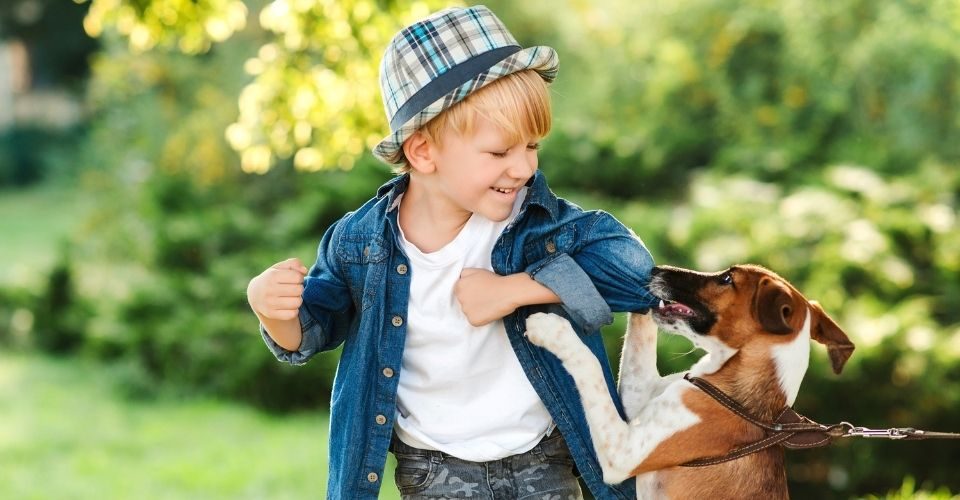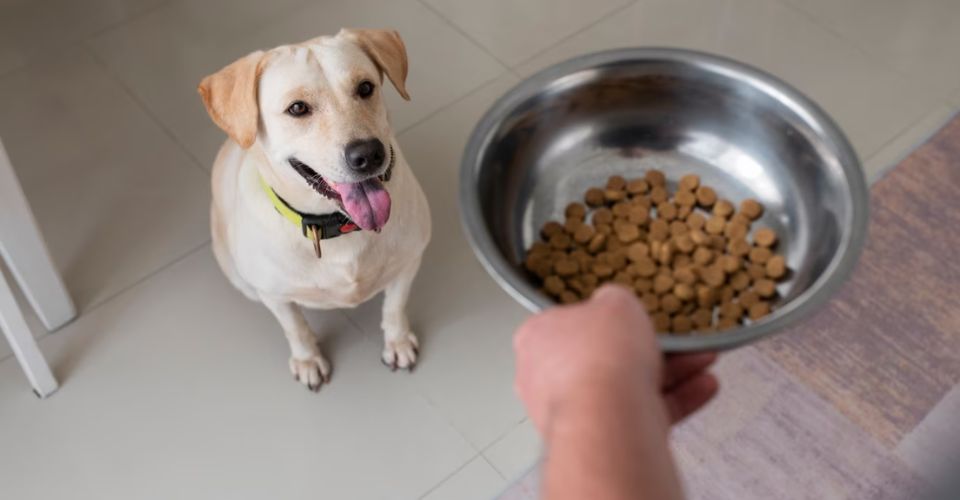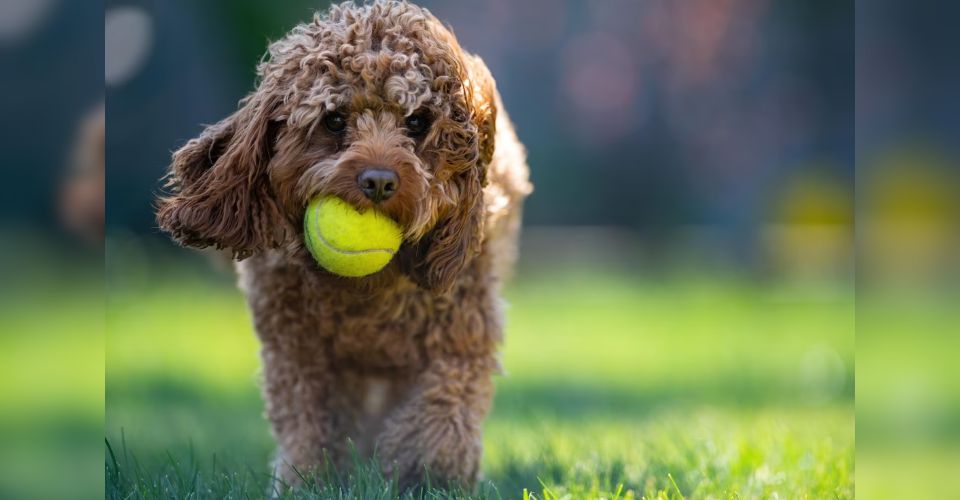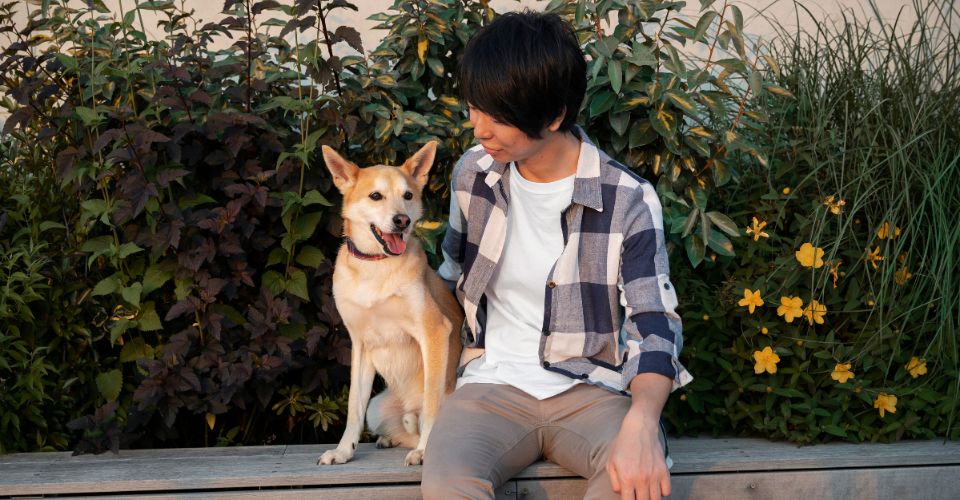“My puppy wont stop biting me I’ve tried everything,” says a dog parent, owner of an 8 month old French Bulldog. She describes her ordeal on reddit as,
“I have an 8 month old Frenchie who is getting more and more out of control. We are going to be doing private training soon but cannot get in for a couple of weeks. As he is getting older and older – he is getting worse and worse. I have been told this age is where dogs can be their worst but I am at a loss of what to do now.
If you do not pay attention to him 100% of the time, he bites. When he first sees you, bites. When you are eating food, bites. Bites the couch, bites your shoes, bites the table. Just a couple of bites or quick jabs and then stops and then goes again.
Have tried deflecting with treats, deflecting with toys, he doesn’t care. He will play with the toy for a second and then go after the feet again.
He is in a crate when we are at work but goes out for about 5-6 15-20 minute walks a day. I always make sure he has toys and things to keep him busy but he seems to like going after the feet more.
Any ideas? It’s driving us crazy!”
Sounds familiar? This is the situation faced by many puppy owners. There are various reasons that may lead to puppy biting behavior, and for each cause, there is a different solution.
If you are one of those pup owners who complain that ‘my puppy wont stop biting me I’ve tried everything,’ stop right there and ask yourself ‘have I tried everything? Really?’
Read the following techniques to see if it helps—it has helped many.
My Puppy Wont Stop Biting Me I’ve Tried Everything
If your puppy won’t stop biting you despite trying everything, then here are some tips to stop a puppy from biting.
1. Exercise
The behavioral issues of dogs often arise due to boredom. Not having enough time to play to release the stored energy makes them frustrated, which is why they exhibit destructive behavior such as biting, chewing, barking, digging, and scratching. This issue is quite common in puppies living in an apartment.
While choosing a puppy, most vets and dog breeders recommend adopting a puppy that matches your lifestyle. What does that mean? It means choosing a puppy according to your schedule, activities, and the setting you live in.
For example, if you are a busy person and work 8 hours a day, you should choose a puppy that doesn’t require a lot of physical activity and doesn’t get separation anxiety if left alone.
On the contrary, if you are an active pet parent and looking for an energetic company that will run or jogs with you for miles, you should go for a puppy that has elevated energy levels. Keeping such dogs is a good option if you are living in a house that has a backyard because these hyper-energetic dogs need a wide space to run and jump around.
However, if you choose a puppy breed that doesn’t fit your lifestyle, then the pup will be predisposed to developing behavioral issues.
For people with busy lifestyles, keeping a puppy from high-energy dog breeds, such as German Shepherds, Border Collies, Afghan Hounds, Rottweilers, or Grey Hounds, can be risky. As they won’t be able to give them enough time and exercise and consequently, the puppy will start biting. Choosing the right dog is the first thing you should do.
If your puppy is biting and you have tried everything, see if you are fulfilling his physical activity needs.
Just to add to your information, lazy dogs require 10 to 15 min of slow walk daily, whereas active dogs require 2 to 3 hours of vigorous exercise to expend all the pent-up energy. You can further get your dog interactive dog toys and food puzzles that will keep anxiety and boredom at bay.
2. Dog Daycare
So, if you have a busy routine but still want to keep a highly energetic dog—either for protection and guarding or just as a hobby—you have the option of availing the services of dog daycare.
In their early childhood, puppies require bite inhibition training along with other obedience and socialization training to get along with their owner and the outside world. Leaving your puppy once or twice a week in a dog daycare will help him normalize his behavior.
However, it’s not necessary that dog daycare services include training your dog, they sure do have a lot of other puppies there, from which your baby will learn how to behave. Or, while playing with other pups, all of his energy will drain, and when he returns back home, he wouldn’t have enough stamina to be mouthy and cheeky.
3. Using a Muzzle
While you may think muzzling a puppy is a cruel approach—it’s not.
Though we love our puppies, and they are like our babies, they have really sharp teeth. If you have friends coming over, you might use a muzzle for a while to prevent biting and subside his ‘angry’ energy.
If your puppy has been exhibiting aggressive behavior and you haven’t gotten him under some kind of behavioral training, you’d have to use a muzzle to ward off his biting behavior. However, we won’t recommend keeping him muzzled all the time; rather, you should do it only when his behavior gets out of control.
You can also use it to train your puppy so that he knows if he is being naughty, he will be muzzled. If he stops being nippy and jabby and gets calm altogether when the muzzle is removed, give him the treat to appreciate it. With this kind of training, you’d be able to manage his moods in a month or so, and you won’t find yourself saying, ‘my puppy wont stop biting me I’ve tried everything!’
Again, muzzling doesn’t mean you are hurting him. Nevertheless, it’s your call if you want to use this tool for behavior correction.
4. Consistent Training
Every single time you are inconsistent, it sets back the training.
If you want to reap the results of dog training quickly, it’s all about consistency. Dogs only understand expected and recurrent training routines. If every time your puppy bites, you give him one reaction or warning like an “Ssh, No!” and then you turn your back, he’d know he has done you wrong.
However, sometimes dogs don’t respond to being ignored positively; instead, they bite more. And in some circumstances, listening to the same ‘No’ all the time, they associate that word with their biting, which means that whenever he’d listen to the word ‘No’ he gets a message that it’s time to bite. Therefore, you should say ‘No’ and turn away at that very moment.
If your puppy still bites, then crate him for 5 minutes (don’t get upset, just calmly do it), and eventually, the dog will learn. But you have to stick with this behavior until your dog learns.
In fact, in the initial puppy bite training period, you should trigger your puppy to bite in a controlled environment and then show him those consequences.
A very effective trick is to use treats and food to control his behavior, which, in the case of the Reddit user mentioned above, didn’t work out. Let’s find another technique and that is a yelp-redirect-removal method.
5. Yelp-Redirect-Removal Method
While training a puppy not to bite, yelp training is the most sought-after method. In this method, if your puppy bites you, you have to let out a ‘yelp’ or a ‘squeal’ and rub that area, so your puppy knows it was hurtful. React quickly, make eye contact, and with a strong voice say, ‘stop’ once. Then carry on with whatever you were doing. However, “if your puppy does not respond to your yelp by easing up or backing off, an effective technique is to call the puppy a ‘Bully!’ and then leave the room and shut the door,” says Dr. Ian Dunbar, while guiding about how to train a puppy for bite inhibition.
Though a good number of dog owners have employed this technique and been successful with that so far. However, depending on the nature of your puppy, if the yelping method is not doing any good or resulting in the opposite, you can add variations to the method. As
Melissa Alexander, a clicker training expert, recommends, “ninety percent of puppies will stop mouthing in mid-bite if you give a high-pitched squeal or yelp. Then you praise the dog and reinforce it by continuing to play. The other ten percent—and puppies who are tired or over-stimulated—will escalate their behavior instead of stopping. This requires you to confine the puppy or end the game. Remove all attention. Bite inhibition training does not require any added aversive—yelling, “popping” the dog on the nose or under the chin, shoving your hand down his throat, or spraying him with water.”
6. Wait
With all the right training and using all the methods we have stated above, there might be less often puppy biting situations, and to end that completely, you have to be consistent and wait for the results. Moreover, as your puppy grows, his biting behavior will also vanish—that doesn’t mean you should stop training.
Other than the above-mentioned techniques, here are some key things you have to integrate into your daily routine for training your puppy and making him obedient.
- Be polite.
- Understand your pet’s psychology.
- Use treats.
- Praise and appreciate him.
- Practice bite inhibition regularly.
Using this type of outlook, your pup’s behavior will get right, and, we hope, you won’t ever find yourself complaining that, ‘my puppy wont stop biting me I’ve tried everything.’





